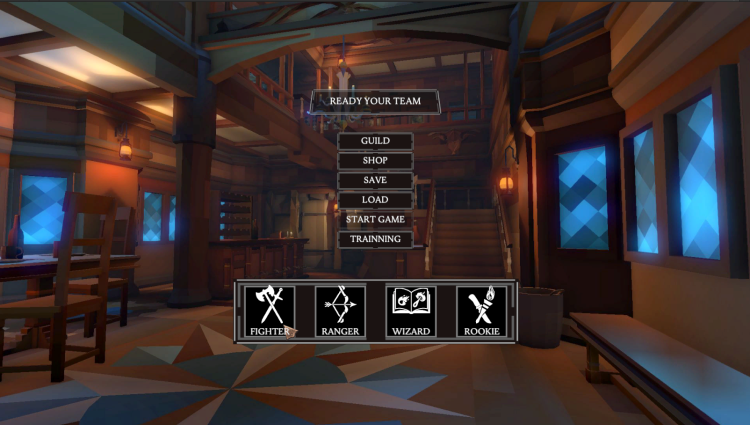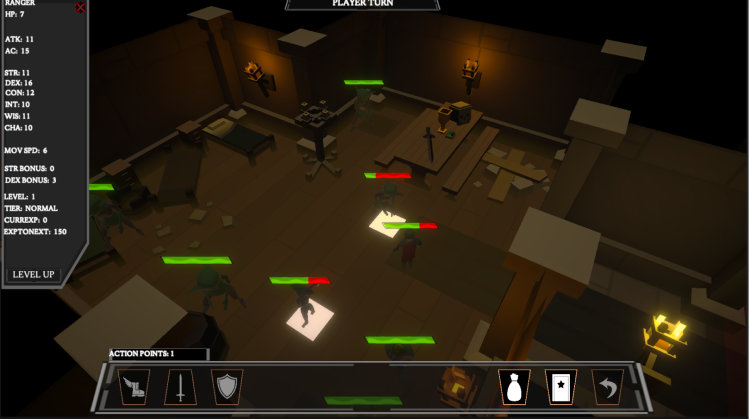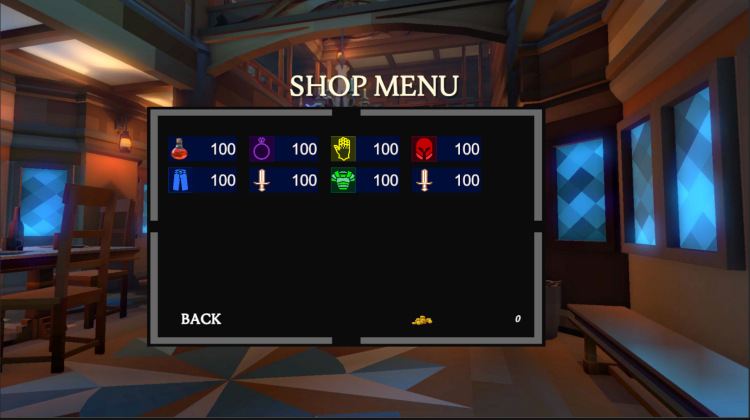Dungeon Delvers
Dungeon Delvers is a Xcom style dungeon crawler. Choose your squad of adventurers and complete quests to earn loot and equipment. Face off against the many creatures in the dark with turn based combat, explore the dungeon to find treasure. Spend your earnings on new gear to grow your party. This project was developed in a group of 6. My role as a producer throughout development involved a lot of planning and big decisions. I kept track off every group member, making sure each individual meets their deadline. The process of working with a team helped me understand the value and importance of cooperation. Together we all had our strengths and weaknesses, but we worked hard to overcome our problems.

The beginning
Before we assembled our team and worked on building the project, everyone had to pitch their ideas to the class through a presentation. My idea for a rouge-lite dungeon crawler was very similar to Jeff Corrigan (GAD student designer) idea. So we decided to collaborate on the idea. 4 programmers joined me and Jeff on this pitch. After our team was formed, we assigned major roles to each student. Jeff took the role as creative director. Jeff's job relied a lot on designing the core experience and main mechanics for the game. I accepted the role as producer. Lastly Jaime Zedan (GAD student programmer) become our tech leader. The tech leader communicated with the programmers, and he handled compiling everyone's work onto 1 project. The team made their GDD (game design document) and TDD (tech design document) and then we got to work. I worked with Jeff with brainstorming, any new ideas were sent to Jeff to confirm if their good or bad. As a producer, I made a list of tasks needed to be done by designers, programmers, and artist. We didn't work much with art until Pouwei Chen joined our team later on. Each student gets a task every week, the schedule would change if the student needed more time to complete a task. We followed this development cycle until the final deadline. The team communicated with one another if any problems need to be reported. We even booked our own meeting to playtest and check up with everyone in the group. Overall, it was running pretty smoothly.

My roles
There were only 2 designers in the team, myself and Jeff. So a number of design roles had to filled in over these past 4 terms. I worked with Jeff draw and design the main UI in the game. We built UI for the main menu, quest board, main gameplay scenario, and pretty much everything else. As a level designer, it fell upon me to build all the levels in each segment. Jeff wanted the movement to feel like moving on a grid. So for grey-blocking, I focus on setting the shape of the levels to be squared. The player would move their party members across the grid using the cursor. I organized each beat to focus on each individual room in the dungeon. The hallways were designed to connect the entire dungeon together. Each room spawned enemies when the player entered one. They would have no choice but to deal with the enemies first before progressing through the dungeon. After establishing the movement, I looked into adding assets. We were lucky to find some helpful dungeon assets. First we looked into build a main layout with floors, walls, and pillars. We stuck with this for a while, but we realize it's probably best if these rooms have some life to them. I spent the last term focusing not only on building levels, but decorating them to reduce the emptiness, and provide some visual storytelling in the dungeon. Each tile on the ground takes up 9 grid squares, the gameplay made due with the space we built. The game was built in 3D, I developed a new cycle for building levels in this format.

My experience
There are benefits to working with a team. Everyone can share their ideas, the amount of tasks can be distributed, problems and errors can be sorted out by asking another peer, and you can learn more about leadership. Of course there has been some complicated mishaps that our group could have worked more on. Like communication, there were times when we needed to speak up more to one another when it came to completing tasks and getting extra help. We also were working online these past 4 terms, so communicating with each other became challenging. Aside from communication, our scope for the game shouldn't have been so big. Jeff's ideas were ambitious, but there's a lot we could have paid more attention too gameplay wise. But this has been an interesting learning experience. I know now that when I work with a team of professionals, I should adapt to our work ethic, and communicate more if something pops up.
Original Game Design Document
If you wish to get a more in depth look at the design choices of Dungeon Delvers. Check out our GDD for more information.
Read the documentProject link
Open the link to check out the game on Itch.io.
Read the documentOther Credits
Jeff Corrigan
Jaime Zedan





